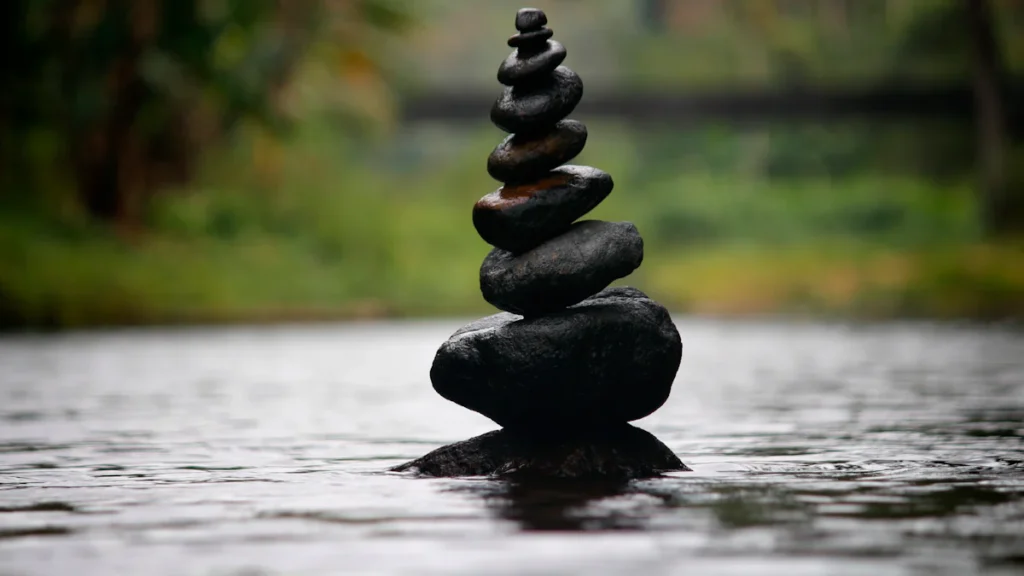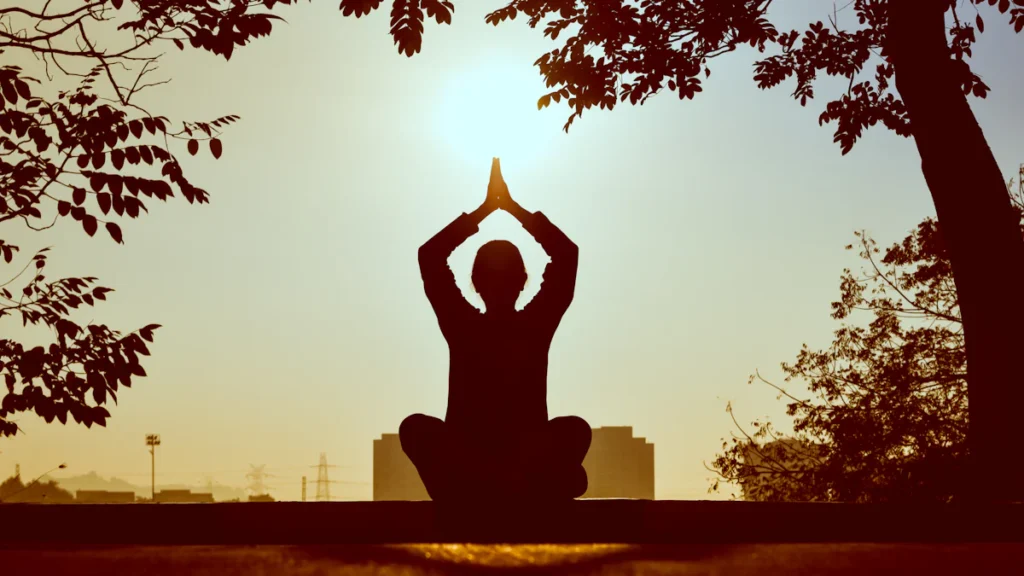7 Easy Tips to Bring Mindfulness into Your Daily Routine
Mindfulness & Meditation means fully experiencing the present moment without judgment. It’s about noticing your thoughts, feelings, and surroundings with clarity. This simple practice can transform your life. Studies show that mindfulness & meditation reduce stress, improve focus, and enhance emotional well-being. For example, mindfulness-based therapy has been found to lower anxiety and depression while boosting self-compassion and overall happiness. You don’t need drastic changes to embrace mindfulness & meditation. Small, intentional actions can seamlessly fit into your daily routine, helping you feel more grounded and connected.
Key Takeaways
Start your day with a simple morning mindfulness ritual, such as deep breathing or setting a positive intention, to create a calm foundation for the day.
Practice gratitude each morning by reflecting on three things you appreciate, which can shift your mindset and enhance your emotional well-being.
Incorporate mindful eating by slowing down during meals, savoring each bite, and engaging your senses to improve your relationship with food.
Transform your commute into a mindful experience by focusing on your breathing or engaging with the sounds around you, helping you arrive at your destination feeling centered.
Use the 5-4-3-2-1 grounding technique during stressful moments to reconnect with your surroundings and reduce anxiety.
Enhance your conversations by practicing active listening and pausing before responding, which fosters deeper connections and understanding.
Create a calming evening routine that includes mindfulness practices, such as reflecting on your day with gratitude or gentle breathing exercises, to promote restful sleep.
https://16abaqr0t71rgn7gpkqn-zwdzo.hop.clickbank.net
Start Your Day with Daily Mindfulness
Starting your day with mindfulness sets a positive tone for everything that follows. It’s a chance to focus on yourself before the demands of the day take over. By carving out a few intentional moments each morning, you can create a foundation of calm and clarity.
Set a Morning Mindfulness Ritual
A morning ritual doesn’t need to be elaborate. Even five minutes can make a difference. Begin by sitting in a quiet space. Close your eyes and take slow, deep breaths. Focus on the sensation of air entering and leaving your body. This simple act helps center your mind and prepares you for the day ahead.
Emily Abbate, a wellness writer, shared how her morning meditation transformed her routine. She said, “Mornings are when I have time to focus on me, before my mind becomes bogged down with action items and calendar reminders.” Her experience highlights the power of starting the day with mindfulness. After just a few days, she noticed feeling more energized and enjoying her daily activities more.
If meditation feels daunting, try setting an intention instead. For example, tell yourself, “Today, I will approach challenges with patience.” This small step helps you incorporate mindfulness into your morning without overwhelming yourself.
Practice Gratitude to Begin the Day
Gratitude is a powerful way to practice mindfulness. Before reaching for your phone or diving into tasks, take a moment to reflect on what you’re thankful for. Think about three things that bring you joy or comfort. It could be as simple as the warmth of your bed, the sound of birds outside, or the support of a loved one.
Writing these thoughts in a journal can deepen the practice. Seeing your gratitude on paper reinforces positive feelings and shifts your mindset. One individual shared how reflecting on gratitude each morning made them feel like a “meditation goddess.” They felt empowered by prioritizing their mental health and noticed a lasting impact on their mood.
Gratitude doesn’t just uplift your spirit—it also grounds you in the present. By focusing on what you have, rather than what you lack, you naturally practice mindfulness. This habit can transform your mornings into a time of peace and positivity.
Practice Mindful Eating in Daily Life

Mindful eating transforms an ordinary meal into a meaningful experience. It encourages you to slow down, connect with your food, and fully engage in the act of nourishing your body. By practicing mindful eating, you can improve your relationship with food and bring mindfulness into your everyday life.
Slow Down and Savor Your Meals
Eating quickly often leads to overeating and missing out on the flavors and textures of your food. I’ve found that slowing down during meals helps me feel more satisfied and connected to what I’m eating. Instead of rushing through a plate, I take small bites and chew thoroughly. This simple change allows me to truly enjoy each bite.
Research shows that mindful eating can reduce unhealthy eating behaviors like binge eating or emotional eating. When you eat slowly, you give your body time to recognize hunger and fullness cues. This practice not only improves digestion but also helps you avoid overeating. I’ve noticed that when I eat mindfully, I feel lighter and more energized throughout the day.
To start, try setting your fork down between bites. Pause to notice the taste, texture, and aroma of your food. These moments of awareness can turn a rushed meal into a calming ritual. Over time, this habit can help you feel more present and grounded in your everyday life.
Engage Your Senses While Eating
Engaging your senses during meals enhances the experience of eating. I like to begin by observing my food. I notice the colors, shapes, and arrangement on my plate. Before taking a bite, I inhale deeply to appreciate the aroma. This small act of mindfulness makes me feel more connected to my meal.
As I eat, I focus on the sensations in my mouth. I pay attention to the crunch of vegetables, the creaminess of sauces, or the sweetness of fruit. This sensory engagement helps me stay present and prevents my mind from wandering. Studies suggest that mindful eating improves digestion and enhances the absorption of nutrients. When I eat this way, I feel more nourished and satisfied.
You can also create a distraction-free environment to support mindful eating. Turn off the TV, put away your phone, and sit in a quiet space. By removing distractions, you allow yourself to fully experience the act of eating. This practice not only enriches your everyday life but also fosters a deeper appreciation for the food you consume.
Incorporate Mindfulness into Your Commute
Your commute doesn’t have to feel like wasted time. I’ve discovered that it can become a peaceful part of the day with a little intention. By practicing mindfulness during your commute, you can arrive at your destination feeling calm and centered, no matter what challenges lie ahead.
Try a Mindful Walk or Drive
I used to rush through my commute, always focused on getting to the next place. Then I started treating my walk or drive as an opportunity for meditation. When I walk, I pay attention to the rhythm of my steps and the way my feet connect with the ground. I notice the air on my skin and the sounds around me. This simple shift helps me feel more present and grounded.
If you drive, try focusing on your breathing while keeping your eyes on the road. Inhale deeply, hold for a moment, and exhale slowly. This practice calms the mind and reduces stress. I’ve found that even in heavy traffic, mindful breathing transforms frustration into a sense of control. A difficult commute no longer feels overwhelming when I use these moments to center myself.
Christina Morrison, a mindfulness advocate, once said, “Mindful commuting allows you to arrive in a fresh, calm mental state, ready to face even the most difficult situations.” Her words resonate with me because I’ve experienced this firsthand. By turning my commute into a meditative practice, I start my day with clarity and focus.
https://2d070cy9n44w8r01yigjhr5oa1.hop.clickbank.net
Use Mindful Listening to Music or Nature
Listening to music or nature sounds during my commute has become one of my favorite mindfulness practices. Instead of letting my mind wander, I focus on the details of what I hear. I notice the melody, the rhythm, and the emotions the music evokes. If I’m outside, I tune into the rustling leaves, chirping birds, or distant hum of the city. These sounds remind me to stay in the present moment.
Mindful listening doesn’t just make the commute more enjoyable—it also enhances my awareness. I’ve noticed that when I fully engage with what I hear, my mind feels less cluttered. This practice creates a sense of peace that carries into the rest of my day.
For those who prefer guided meditation, consider listening to a mindfulness app or podcast during your commute. These tools can help you stay focused and provide gentle reminders to breathe deeply and let go of stress. I’ve found that starting my day with a short meditation session during my commute sets a positive tone for everything that follows.
“Think of your commute to work as an optimal time for a quick mindfulness or meditative practice to center yourself.” This advice has changed how I approach my mornings. Instead of dreading the journey, I now see it as a chance to nurture my mental well-being.
Take Mindful Breaks to Stay Grounded
Life often feels overwhelming, but I’ve learned that taking mindful breaks can bring a sense of calm and clarity. These moments allow me to reset, reconnect, and stay grounded throughout the day. By pausing intentionally, I create space to check in with my body and mind, which helps me navigate challenges with greater ease.
Use the 5-4-3-2-1 Grounding Technique
The 5-4-3-2-1 grounding technique has become one of my favorite mindfulness exercises. It’s simple yet incredibly effective when I feel stressed or distracted. This method helps me focus on the present moment by engaging my senses. Here’s how it works:
Notice five things you can see: I look around and name objects in my environment. It could be the color of a book, the shape of a lamp, or the texture of a curtain. Observing these details pulls me out of my thoughts and into the here and now.
Identify four things you can touch: I run my fingers over the surface of my desk, feel the fabric of my clothes, or notice the sensation of my feet on the ground. This tactile awareness helps me check in with my body and feel more connected.
Acknowledge three things you can hear: I listen for subtle sounds, like the hum of an appliance, birds chirping outside, or even my own breath. Tuning into these sounds sharpens my focus and quiets mental noise.
Recognize two things you can smell: I might notice the scent of coffee, a candle, or fresh air from an open window. If I can’t detect a smell, I take a moment to imagine a favorite scent, like lavender or citrus.
Focus on one thing you can taste: I sip water, chew gum, or simply notice the lingering taste in my mouth. This final step anchors me fully in the present.
This technique works wonders when I feel overwhelmed. It’s like hitting a mental reset button. Studies on grounding techniques show they help regulate emotions and establish a sense of safety, which aligns with my own experience. Whenever I practice this, I feel more balanced and ready to tackle the rest of my day.
Practice Mindful Breathing Exercises
Mindful breathing has transformed how I manage stress. When I focus on my breath, I feel an immediate sense of calm. It’s a simple practice, but it holds immense power. I often pause during the day to take a few deep breaths, especially when I notice tension building in my body.
One exercise I love involves inhaling deeply for four counts, holding the breath for four counts, and exhaling slowly for six counts. This rhythmic breathing soothes my nervous system and helps me check in with my body. Research shows that mindfulness meditation, including mindful breathing, lowers cortisol levels and reduces stress-related risks. I’ve felt this firsthand. After just a few minutes, my mind feels clearer, and my body feels lighter.
Another technique I use is belly breathing. I place one hand on my stomach and the other on my chest. As I inhale, I focus on expanding my belly rather than my chest. This type of breathing feels grounding and helps me stay present. It’s especially helpful during busy or chaotic moments.
Mindful breathing exercises don’t require special tools or a lot of time. I can practice them anywhere—at my desk, in the car, or even while waiting in line. These small pauses remind me to slow down and reconnect with myself. They’ve become an essential part of my mindfulness routine, helping me reduce stress and approach each day with greater clarity.
https://679e9hj-n03rnx9d89hqvh0fb7.hop.clickbank.net
Be Present in Conversations with Mindfulness
Mindfulness isn’t just about personal reflection. It also transforms how we connect with others. I’ve noticed that when I bring mindfulness into conversations, my relationships feel deeper and more meaningful. By staying present and fully engaged, I create space for genuine connection and understanding.
Practice Active Listening
Active listening has changed the way I communicate. Instead of thinking about what to say next, I focus entirely on the person speaking. I notice their tone, expressions, and the emotions behind their words. This practice helps me stay present and strengthens my awareness of their perspective.
To practice active listening, I start by putting away distractions. I silence my phone and make eye contact. Then, I listen without interrupting. If my mind starts to wander, I gently bring it back to the conversation. This small effort makes a big difference. People feel heard and valued when I give them my full attention.
Research supports the power of active listening. A study on mindfulness training found that participants reported higher levels of empathy after just eight weeks. This resonates with my experience. When I listen mindfully, I feel more connected and compassionate. As Deepak Chopra teaches, mindfulness deepens our ability to understand and relate to others.
“When you listen with full awareness, you don’t just hear words—you hear the heart behind them.” This insight has guided me to approach conversations with curiosity and care. I’ve learned that listening isn’t just about hearing; it’s about being fully present.
Pause and Respond Thoughtfully
Pausing before responding has transformed how I communicate. I used to rush to fill silences, but now I take a moment to reflect. This pause allows me to choose my words carefully and respond with intention. It also gives me time to process what the other person has shared.
When I pause, I notice my initial reactions. Sometimes, I feel the urge to defend myself or offer advice. Instead, I take a breath and ask myself, “What does this person need right now?” This simple question shifts my focus from reacting to understanding. It helps me respond in a way that supports the conversation.
Mindful pauses also reduce misunderstandings. By slowing down, I avoid jumping to conclusions or making assumptions. I’ve found that thoughtful responses lead to more productive and meaningful discussions. As Eckhart Tolle emphasizes, mindfulness creates space for clarity and connection in our interactions.
To practice this, I remind myself to breathe before speaking. I might say, “Let me think about that for a moment,” to give myself time. This habit has improved my relationships and made me a more mindful communicator.
“Mindful communication isn’t about saying the perfect thing—it’s about showing up with presence and authenticity.” This perspective inspires me to approach every conversation with patience and care.
Wind Down with Evening Mindfulness & Meditation

Evenings offer a perfect opportunity to slow down and reconnect with yourself. I’ve found that incorporating simple mindfulness practices into my nighttime routine helps me release the day’s stress and prepare for restful sleep. By ending the day with intention, I wake up feeling more refreshed and balanced.
Reflect on Your Day with Gratitude
Gratitude has become a cornerstone of my evening mindfulness practice. Before bed, I take a few moments to reflect on the positive moments of my day. I think about small victories, kind interactions, or even the beauty of a sunset I noticed. This practice shifts my focus from what went wrong to what went right, which leaves me with a sense of peace.
Sometimes, I write these reflections in a journal. Seeing my thoughts on paper makes them feel more tangible. For example, I might jot down, “I’m grateful for the laughter I shared with a friend today.” This habit not only enhances my well-being but also strengthens my ability to notice the good in everyday life. Research shows that mindfulness practices like gratitude reduce rumination and negative emotions, which aligns with my experience of feeling lighter and more optimistic after this exercise.
If journaling feels like too much, I simply close my eyes and mentally list three things I’m thankful for. This quick practice takes less than a minute but has a profound impact on my mindset. Gratitude grounds me in the present moment and reminds me of the abundance in my life.
Create a Relaxing Bedtime Routine
A calming bedtime routine has transformed how I approach sleep. I used to scroll through my phone until I felt tired, but this left my mind racing. Now, I dedicate the last 30 minutes of my day to mindfulness & meditation. This intentional wind-down helps me transition from the busyness of the day to a state of relaxation.
I start by dimming the lights and creating a peaceful environment. Sometimes, I light a candle or play soft music. Then, I practice mindfulness meditation by focusing on my breath. I inhale deeply, hold for a moment, and exhale slowly. This rhythmic breathing soothes my nervous system and quiets my thoughts. Studies have shown that mindfulness meditation improves sleep quality, which I’ve experienced firsthand. After just a few minutes, I feel my body relax and my mind settle.
Another part of my routine involves gentle stretches. I focus on how my muscles feel as I move, which keeps me present. This practice releases tension and prepares my body for rest. On particularly stressful days, I use guided meditations designed for sleep. These sessions help me let go of lingering worries and drift off more easily.
Consistency is key. By repeating these simple mindfulness practices each night, I’ve trained my body and mind to associate them with relaxation. Over time, this routine has become a signal that it’s time to rest, making it easier to fall asleep and wake up feeling rejuvenated.
“The way you end your day sets the tone for how you’ll begin the next.” This quote inspires me to approach my evenings with care and intention. By prioritizing mindfulness & meditation at night, I’ve created a foundation for better well-being and deeper rest.
Make Mindfulness a Sustainable Habit
Building mindfulness into your daily life doesn’t require drastic changes. I’ve learned that starting small and staying consistent creates habits that last. By focusing on manageable steps, I’ve found it easier to stay present and make mindfulness a natural part of my routine.
Start Small and Build Gradually
When I first began cultivating mindfulness, I felt overwhelmed by the idea of meditating for long periods. Instead of diving in too deep, I started with just two minutes a day. I would sit quietly, focus on my breath, and notice the present moment. This small commitment felt achievable and gave me the confidence to continue.
One of the easiest ways to build mindfulness is by pairing it with activities you already do. For example, I practice mindfulness while brushing my teeth. I pay attention to the sensation of the toothbrush, the taste of the toothpaste, and the sound of the bristles. These moments help me stay grounded without adding extra tasks to my day.
Another simple practice involves mindfulness while taking a shower. I focus on the warmth of the water, the scent of the soap, and the feeling of the droplets on my skin. These small actions remind me to slow down and appreciate the present moment. Over time, these tiny efforts have grown into a sustainable habit that enriches my daily life.
“Small steps lead to big changes.” This quote resonates with me because I’ve seen how small, consistent actions can transform my mindset. Starting small allowed me to build mindfulness without feeling overwhelmed.
Use Reminders to Incorporate Mindfulness
In the beginning, I often forgot to practice mindfulness. To stay on track, I started using reminders. Sticky notes on my bathroom mirror or phone alarms helped me remember to pause and focus on the present moment. These gentle nudges made it easier to stay consistent.
I also use visual cues to bring mindfulness into my day. For instance, I place a small stone on my desk. Every time I see it, I take a deep breath and reconnect with the present moment. This simple trick helps me reset during busy days.
Technology can also support mindfulness. Apps with guided meditations or breathing exercises remind me to take mindful breaks. Even a quick notification saying, “Take a moment to breathe,” can make a difference. These tools have helped me stay consistent and make mindfulness a habit.
https://fiscalfitnessflow.com/index.php/2025/05/22/7-tips-to-kickstart-your-functional-fitness-journey/
Be Patient and Celebrate Progress
Mindfulness is a journey, not a destination. I’ve learned to be patient with myself as I build mindfulness into my daily life. Some days feel easier than others, but I remind myself that every effort counts. Even a single mindful breath is progress.
Celebrating small wins keeps me motivated. When I notice myself staying present during a stressful moment or enjoying mindfulness while brushing my teeth, I take a moment to acknowledge my growth. These small victories remind me that I’m moving in the right direction.
I’ve also learned to let go of perfection. Mindfulness isn’t about doing it “right” every time. It’s about showing up and trying. By focusing on progress instead of perfection, I’ve found joy in the process of cultivating mindfulness.
“Celebrate the small steps—they lead to lasting change.” This mindset has helped me stay positive and committed to building mindfulness into my daily life.
Mindfulness offers a simple yet transformative way to enrich daily life. By focusing on the present, I’ve discovered how small, intentional actions can create profound changes. Whether it’s pausing to breathe, savoring a meal, or reflecting on gratitude, these practices have helped me feel more grounded and connected.
I encourage you to start small. Choose one tip from this guide and try it today. Notice how it shifts your awareness and brings calm into your routine. Remember, mindfulness is a journey. Celebrate each step and enjoy the process of becoming more present in your life.
FAQ
What is informal mindful meditation practice?
Informal mindful meditation involves bringing awareness to everyday activities. Instead of setting aside specific time for meditation, you focus on being fully present in whatever you’re doing. For example, while washing dishes, you might notice the warmth of the water, the texture of the soap, and the sound of running water. This practice allows mindfulness to flow into every part of your day. Over time, it strengthens your ability to stay present and engaged, no matter the situation.
“Mindfulness isn’t just about sitting still; it’s about showing up fully for life’s moments.” This perspective has helped me embrace informal practices as a way to stay grounded throughout my day.
How can I start practicing mindfulness if I feel too busy?
Starting small makes mindfulness accessible, even with a packed schedule. Begin with one-minute practices, like focusing on your breath or noticing your surroundings. Pair mindfulness with daily tasks, such as brushing your teeth or drinking coffee. These moments don’t require extra time but help you build the habit. I’ve found that even brief pauses during a busy day can create a sense of calm and clarity.
Can mindfulness help reduce stress?
Yes, mindfulness is a powerful tool for managing stress. By focusing on the present moment, you can break free from the cycle of worrying about the past or future. Practices like mindful breathing or grounding techniques calm the nervous system and lower stress levels. I’ve experienced this firsthand. When I pause to breathe deeply during stressful moments, I feel more in control and less overwhelmed.
Do I need to meditate to practice mindfulness?
Meditation is one way to practice mindfulness, but it’s not the only way. Mindfulness can be integrated into everyday activities, like walking, eating, or even commuting. For instance, I often practice mindful listening by tuning into the sounds around me, whether it’s music or nature. These informal mindfulness activities make it easy to stay present without needing a dedicated meditation session.
How long does it take to see the benefits of mindfulness?
The benefits of mindfulness can appear quickly, even after a few minutes of practice. For me, the sense of calm and focus often comes immediately after a mindful breathing exercise. Long-term benefits, like improved emotional well-being and reduced stress, build over time with consistent practice. The key is to stay patient and celebrate small progress along the way.
uces insomnia and enhances sleep quality.
How do I stay consistent with mindfulness?
Consistency comes from starting small and building gradually. Set reminders, like sticky notes or phone alarms, to prompt mindfulness moments. Pair mindfulness with daily habits, such as showering or commuting. Celebrate small wins to stay motivated. I’ve learned that progress, not perfection, is what matters most. Over time, these small efforts grow into lasting habits.
Conclusion
Incorporating mindfulness into your daily routine can significantly enhance your overall well-being by promoting mental clarity and reducing stress. As you embark on this journey towards a healthier and more mindful lifestyle, we encourage you to take the first step today. Explore the techniques shared in this post, and begin integrating them into your everyday activities. Your path to a more balanced and peaceful life starts now. For additional resources and community support, visit our website and join our wellness community. Together, let’s achieve a state of calm and focus that empowers you to thrive in all aspects of life.





